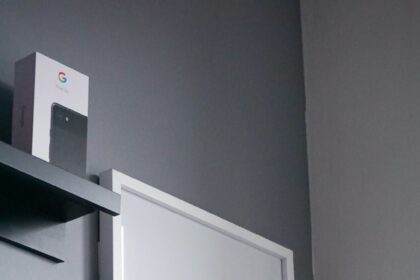QuickAdvisr helps you stay informed with the latest insights. DIY home projects can be a rewarding way to improve your space and save money. However, many homeowners underestimate the true cost of these projects, leading to unexpected expenses and frustration. In this guide, we’ll walk you through how to calculate the true cost of a DIY home project so you can plan effectively and avoid surprises.
- Why Calculating the True Cost Matters | Powered by QuickAdvisr
- Step-by-Step Guide to Calculating the True Cost
- 1. List All Required Materials
- 2. Research Tool Costs
- 3. Account for Hidden Expenses
- 4. Estimate Your Time
- 5. Compare DIY vs. Professional Costs
- Common Mistakes to Avoid
- Example: Calculating the Cost of Painting a Room
- Tips to Save Money on DIY Projects
- When to Hire a Professional
Why Calculating the True Cost Matters | Powered by QuickAdvisr

Before diving into any DIY project, it’s essential to understand the full scope of expenses involved. While DIY can be cheaper than hiring professionals, hidden costs can quickly add up. By calculating the true cost upfront, you can:
- Set a realistic budget.
- Avoid overspending on materials or tools.
- Determine whether DIY is truly the best option.
Step-by-Step Guide to Calculating the True Cost

1. List All Required Materials
Start by creating a detailed list of all the materials you’ll need for your project. This includes everything from paint and lumber to nails and screws. Don’t forget to account for extra materials to cover mistakes or unexpected issues.
2. Research Tool Costs
If you don’t already own the necessary tools, factor in the cost of purchasing or renting them. For example, a power drill or saw can be a significant expense if you don’t already have one.
3. Account for Hidden Expenses
Hidden costs often include:
- Permits and inspections.
- Disposal fees for waste materials.
- Utility costs (e.g., electricity for power tools).
4. Estimate Your Time
While time isn’t a direct financial cost, it’s still valuable. Consider how much time you’ll spend on the project and whether it’s worth it. If you’re taking time off work, factor in lost income.
5. Compare DIY vs. Professional Costs
Sometimes, hiring a professional can be more cost-effective than DIY. Compare your total DIY costs with quotes from contractors to make an informed decision.
| Expense | DIY Cost | Professional Cost |
|---|---|---|
| Materials | $500 | $700 |
| Tools | $200 | $0 |
| Time | 20 hours | 0 hours |
| Total | $700 | $700 |
Common Mistakes to Avoid
When calculating the true cost of a DIY project, many homeowners make these common mistakes:
- Underestimating material quantities.
- Ignoring tool or equipment costs.
- Overlooking permits or inspection fees.
- Not factoring in the value of their time.
“Always budget for at least 10% extra materials to account for mistakes or unexpected issues.” – Home Improvement Expert
Example: Calculating the Cost of Painting a Room
Let’s break down the true cost of painting a room as an example:
- Materials: Paint ($50), brushes ($20), rollers ($15), drop cloths ($10).
- Tools: Ladder ($0 if owned, $30 if rented).
- Hidden Costs: Disposal bags ($5), electricity for lighting ($2).
- Time: 6 hours (no lost income).
Total DIY Cost: $122
Tips to Save Money on DIY Projects
Here are some practical tips to reduce costs while tackling DIY home projects:
- Borrow tools from friends or family.
- Shop for materials during sales or discounts.
- Reuse or repurpose existing materials.
- Plan carefully to minimize waste.
When to Hire a Professional
While DIY can save money, some projects are better left to professionals. Consider hiring a contractor if:
| Situation | Reason |
|---|---|
| Complex projects | Require specialized skills or equipment. |
| Time constraints | Professionals can complete the job faster. |













